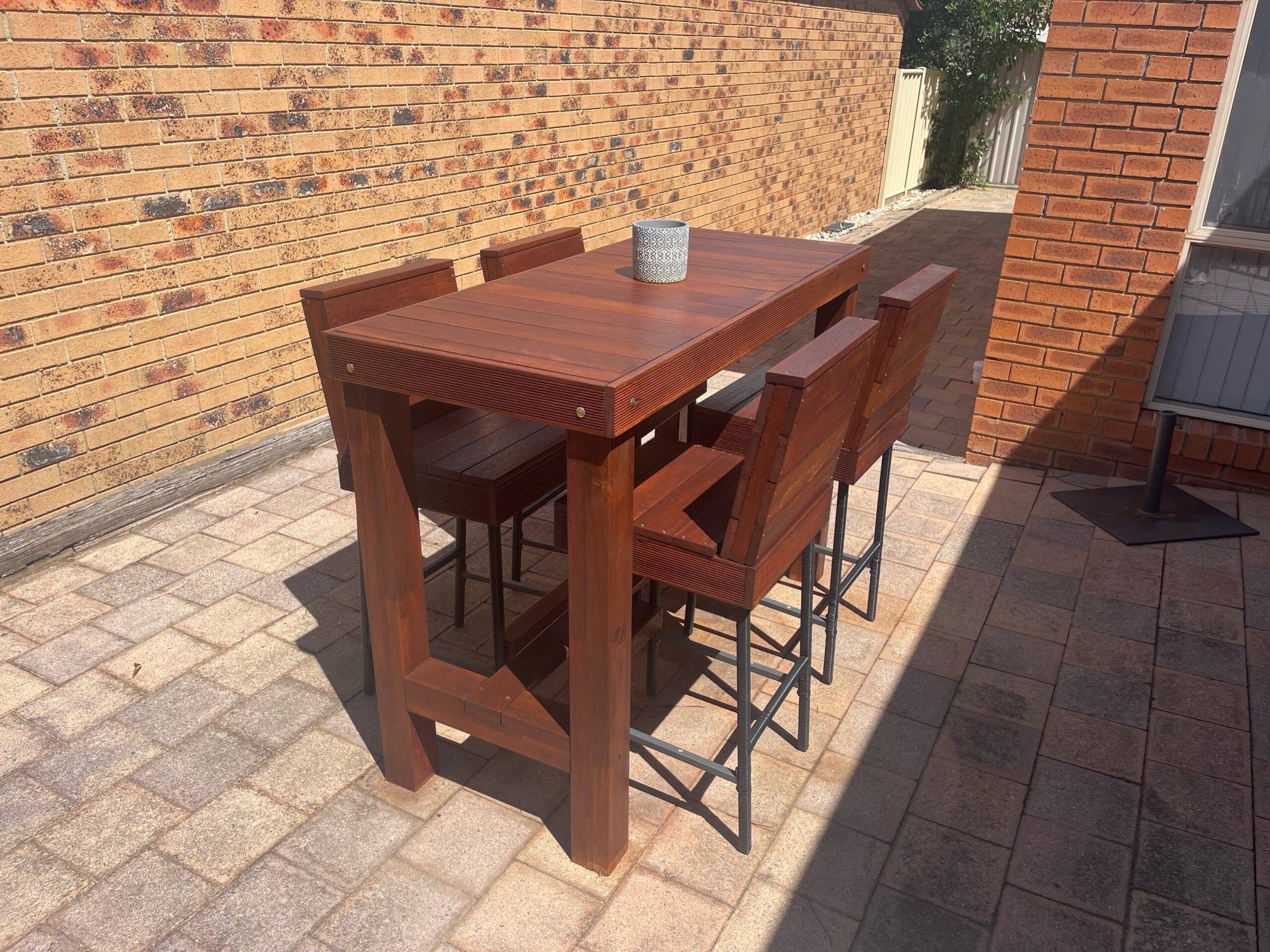
This project was a request from my Son. He asked if I would be able to make him an outdoor bar table for his entertainment area at home. He is 6″4 and finds sitting at regular outdoor picnic benches very uncomfortable. My son is also one of those people who like to stand and lean on a table when chatting rather than sitting on a stool. So he wanted the table to be higher so it would be more comfortable for him.
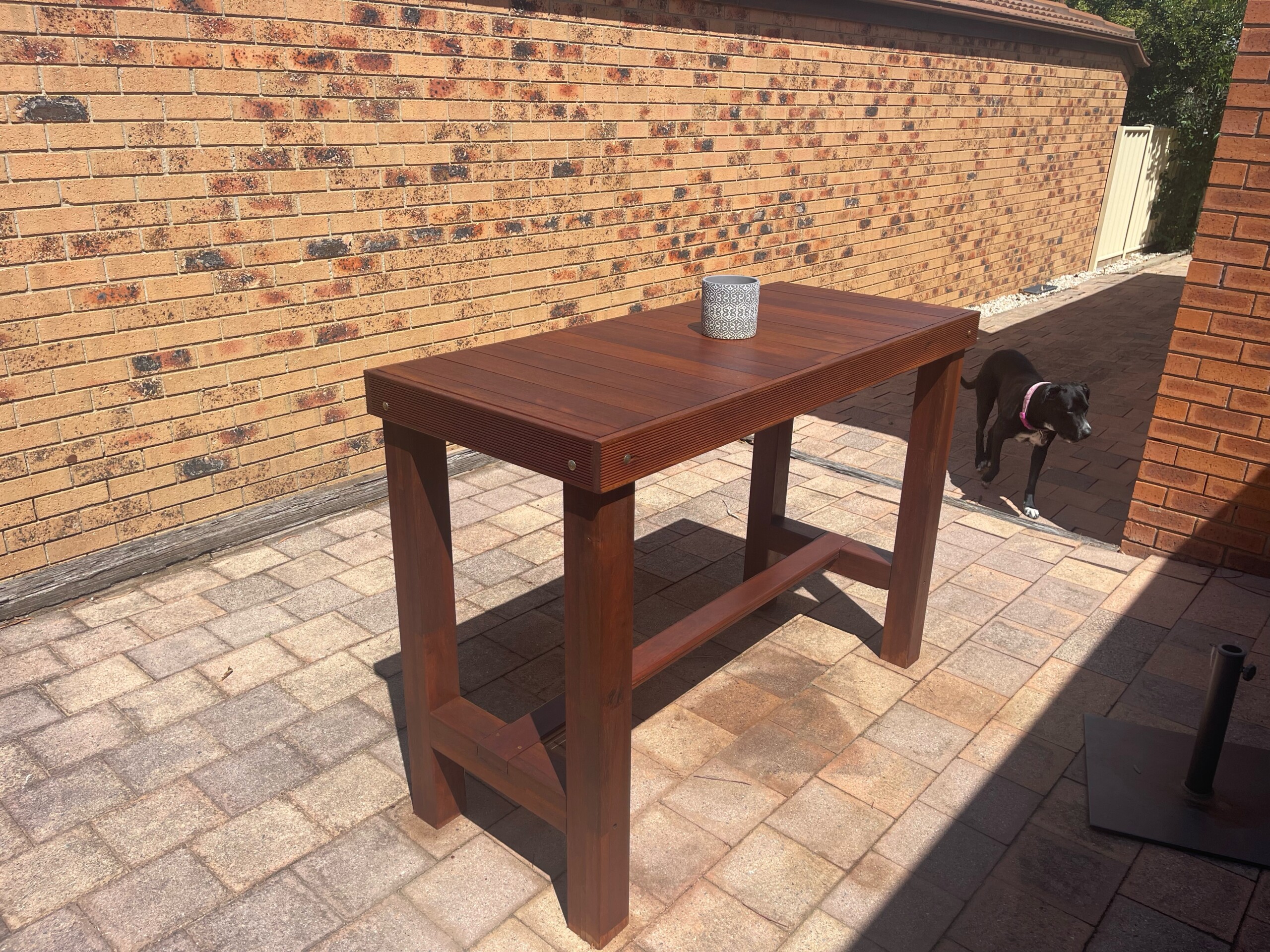
I was lucky enough to be given some decking wood and fencing posts that were leftover after building their deck. I thought this would be the perfect wood to use for this project. If you know the cost of decking wood you will know it is very expensive. Another incentive to make our own was the cost to purchase one which is around $3000 for a lightweight outdoor bar table.
DIY Outdoor Bar Table
*This post may contain affiliate links. This means I earn a small commission on links used at no extra cost to you. Please see my disclosure policy for more information.**
Cutting the wood
As mentioned above I used leftover decking wood and fencing posts for this project. You can use any wood I just used what I had on hand. I had some 4M+ lengths and lots of offcuts which I will be using for the top.
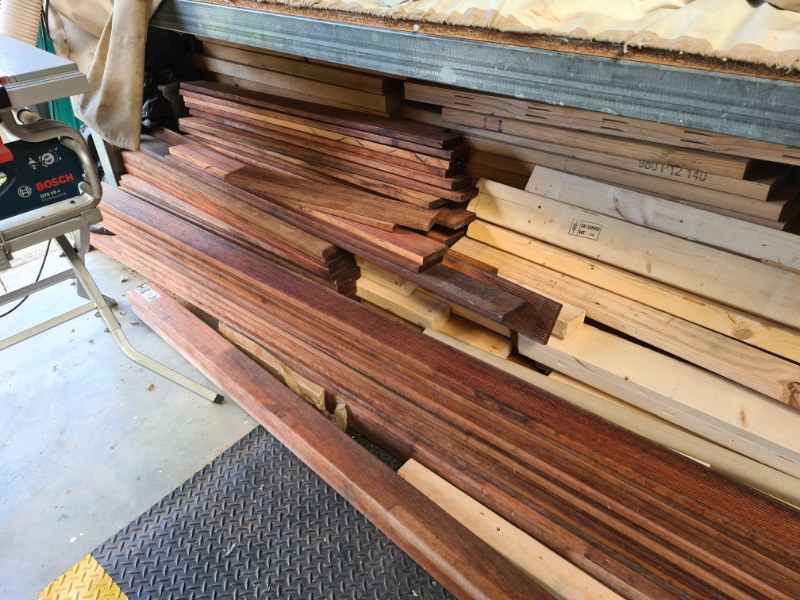
The dimension for this outdoor bar table is as follows. (L) 150cm x (W) 64cm x (H) 110cm. And the wood was cut to the following sizes
- 4 x 110cm x 9cm x 9cm (legs)
- 2 x 150cm x 9cm x 2cm (Frame length)
- 2 x 60cm x 9cm x 2cm (Frame Width)
- 16 x 60cm x 9cm x 2cm (top)
- 2 x 38cm x 9cm x 9cm (leg Supports)
- 2 x 150cm x 9cm x 2cm ( Footrest)
I started by cutting the wood for the table legs. The 9cm x 9cm wood I had was one long piece of approximately 4.8m. So I had no way of cutting the wood on my mitre saw because I could not lift it. For this reason, I had to cut it the old fashion way first. This was done using a mitre box and a hand saw. And oh boy was that hard work!
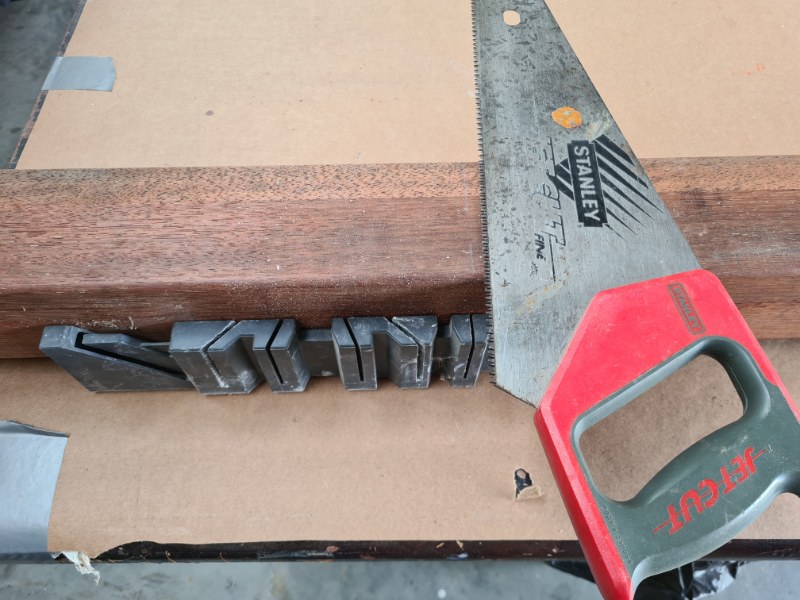
I have found in the past that cutting with an old used mitre box is not very accurate. This is because over time the grooves get cut away by the handsaw. For this reason, I cut the wood slightly longer than I needed. Next, using a square ruler and pen I marked the legs to the correct length and cut away the excess on the mitre saw
.
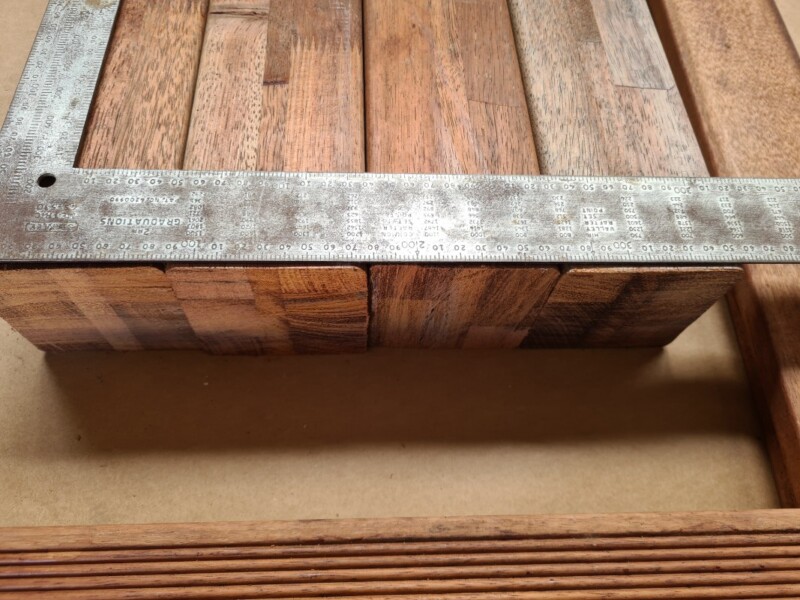
Building the bar table frame
To build the tabletop frame I used a Kreg pocket hole jig.
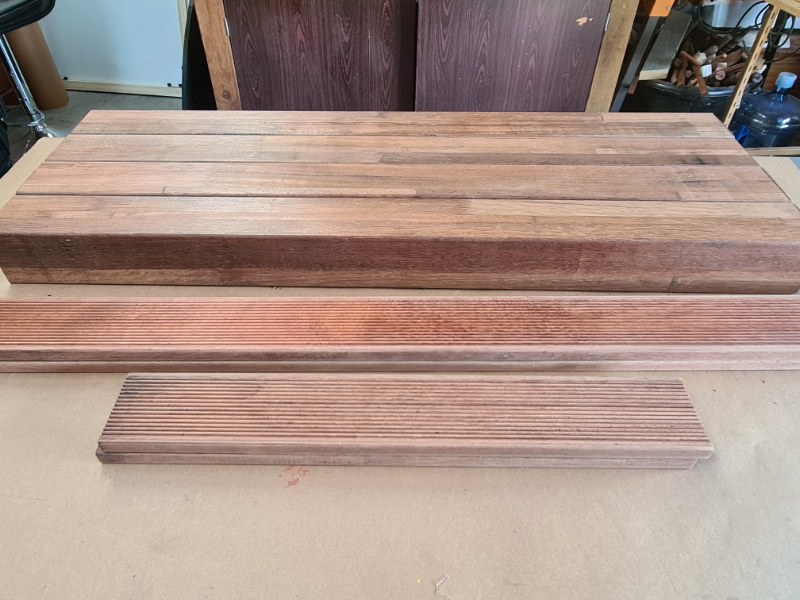
I know many will say this kind of joint will not be strong enough to hold the weight of this table, but I planned to add bolts to secure them later.
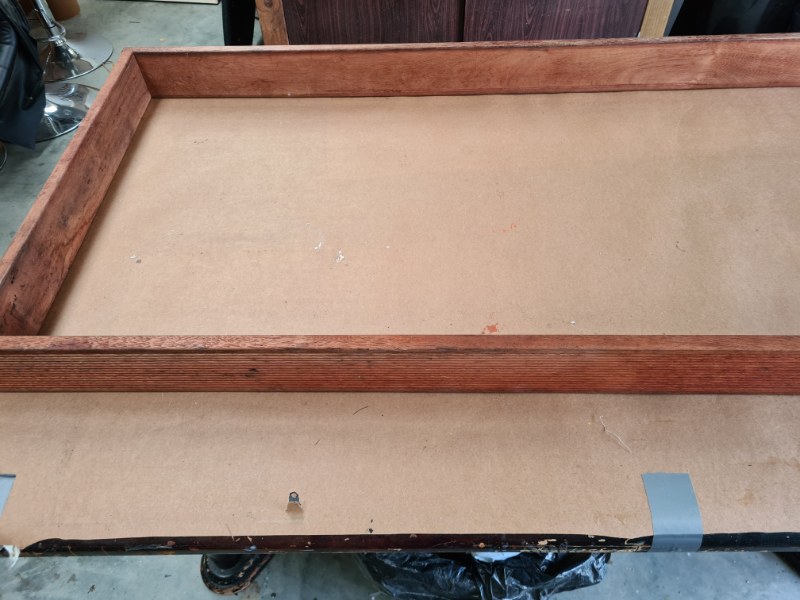
I clamped the wood for the sides of the table into the Kreg jig and drilled two holes into each side. Because I was using decking planks which have ridges on one side I had these facing outwards as a feature on the frame.
Next, I added wood glue and screwed
the table frame together.
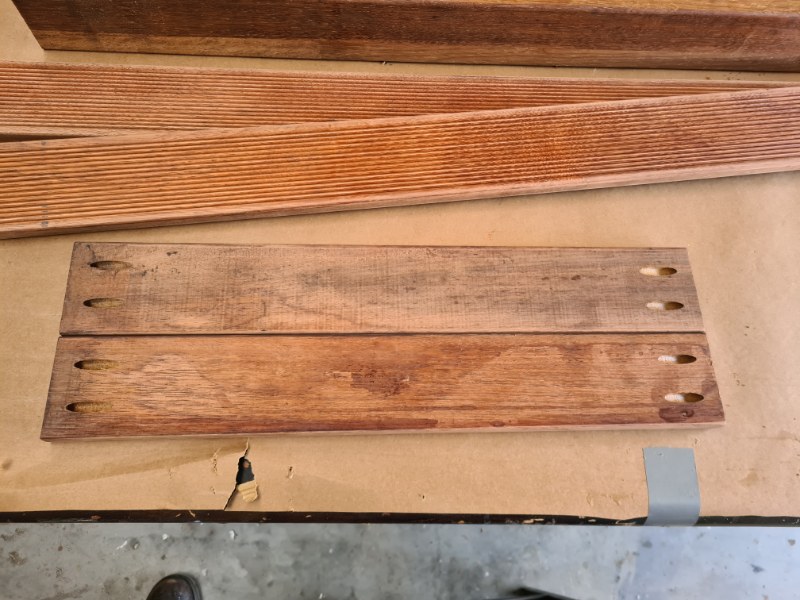
Adding the tabletop
Before I started adding the wood to the top I did a dry fit first to make sure all the pieces fit well together. I did have to cut one of the pieces of wood to size to fill the last gap. Ideally, you should add the odd side piece to the middle so the table looks more balanced.
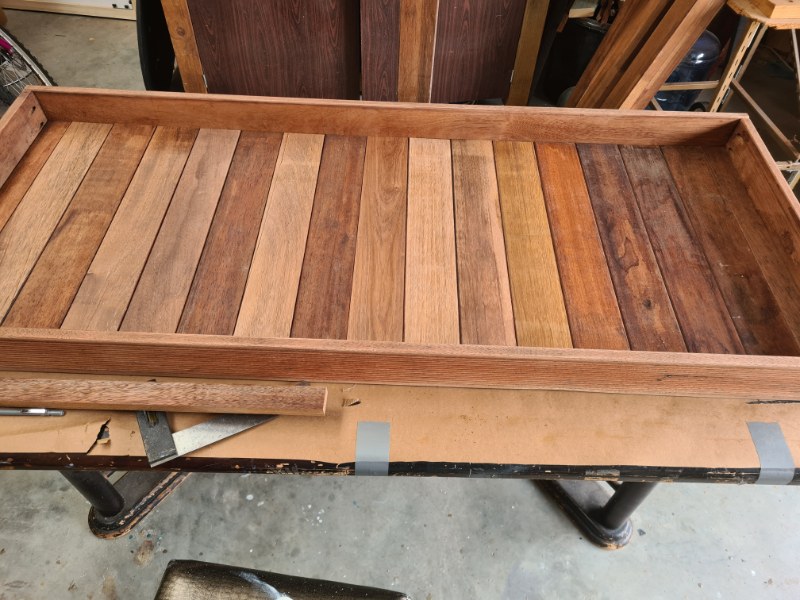
Once I was happy with how all the wood fit into the frame. I again used the Kreg pocket hole jig to add 2 holes on each end of the wood for the tabletop. I did reverse the wood this time so that the ridges will be facing down.
Unfortunately, I don’t have the proper Kreg clamp to hold the wood in place, so I used regular clamps to stop the wood from moving as they are screwed into place. You can now add some wood glue and screws to secure the wood to the frame.
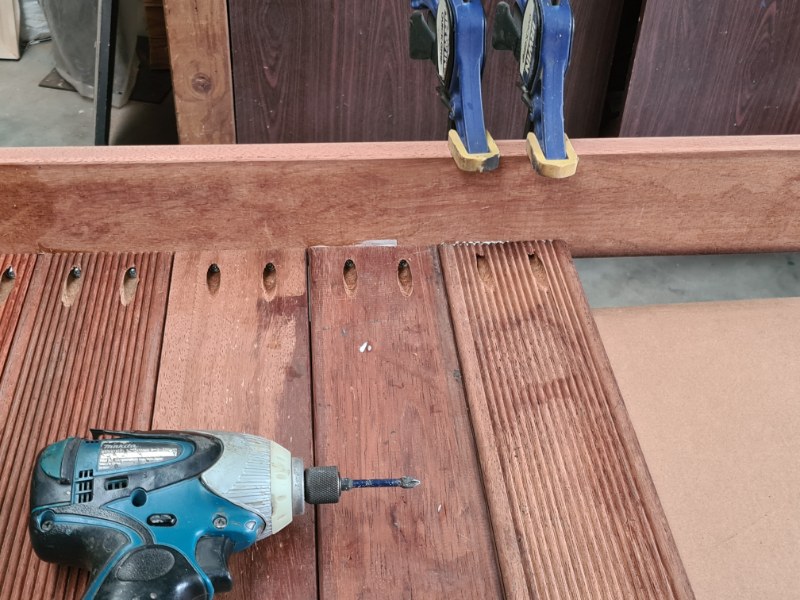
A few years ago I made a trough party table which had very heavy legs like this one. And one lesson I learnt from making this was to add some support to the underneath of the table. This support will prevent the wood from moving over time. I added a screw to each piece of wood.
Adding the legs
Before you start drilling any holes into the legs, you need to make sure the legs are straight. I used a square ruler again and once they were straight I clamped them into place.
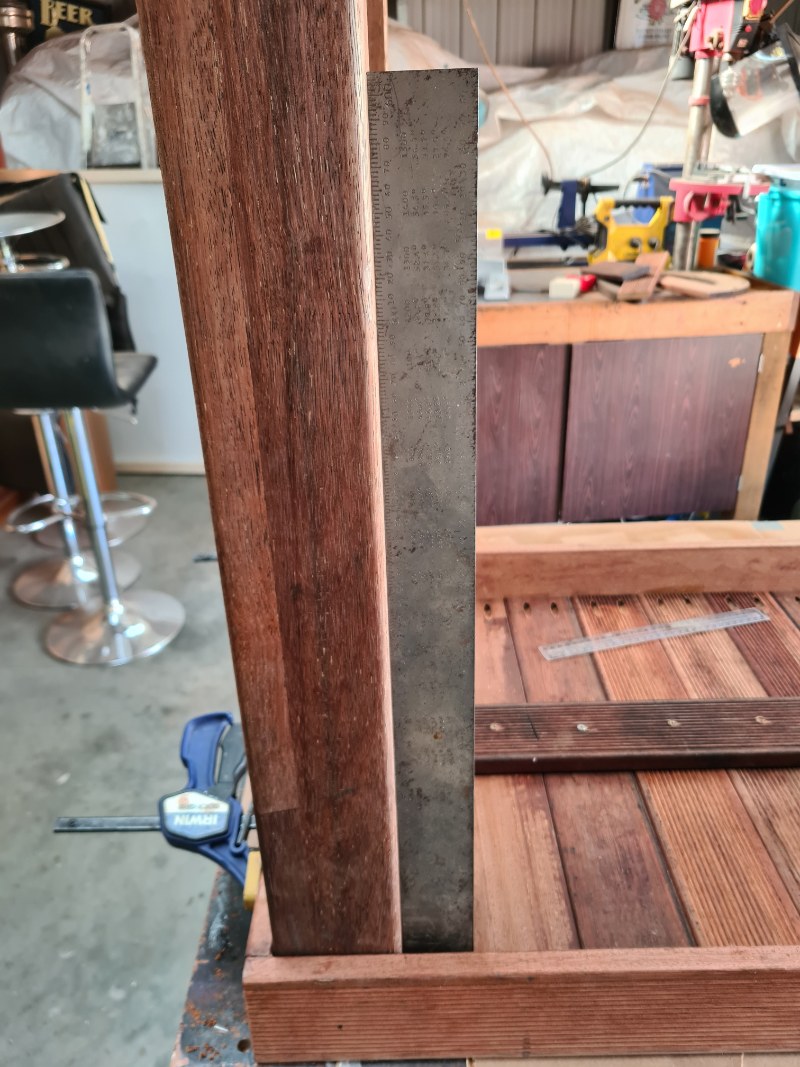
To make sure the legs were secure I added two bolts to each side. If you are doing the same you need to mark them out first to make sure they don’t overlap. To make the hole for the bolt I used a spade drill bit
and drilled out a section for the bolt.
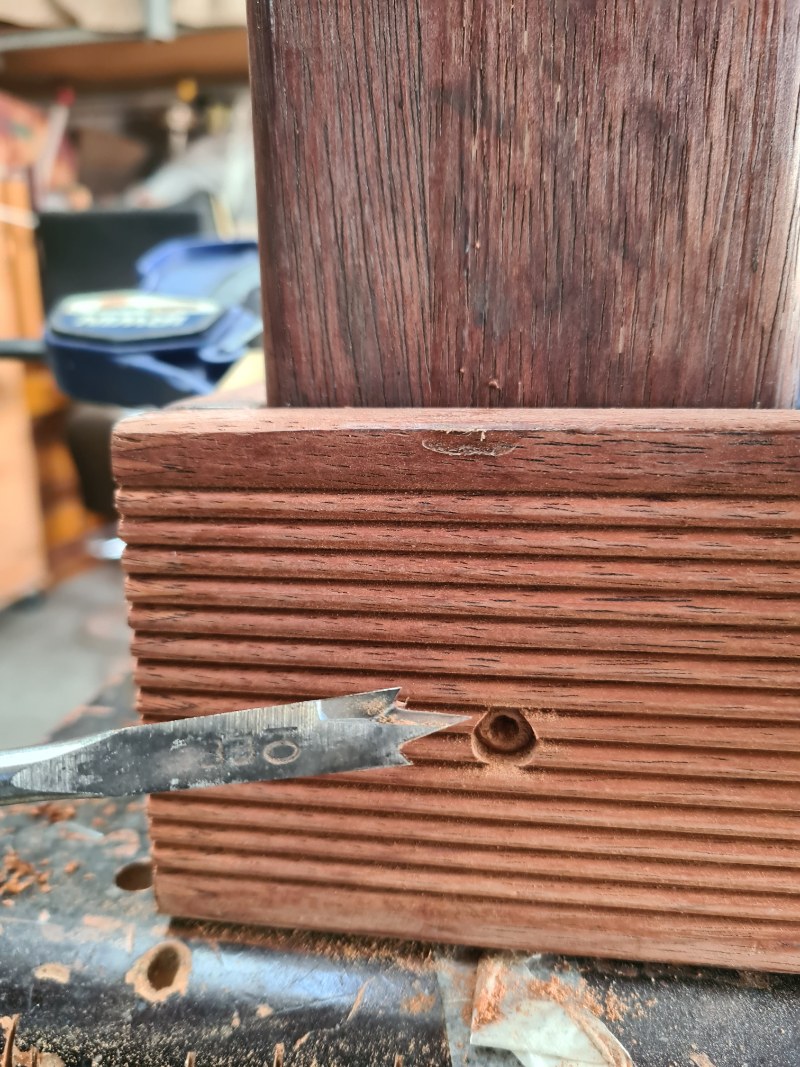
Next, I used a punch and hammer to mark the spot where the hole for the bolt will go. And then used a larger spade bit to drill the holes for the bolts.
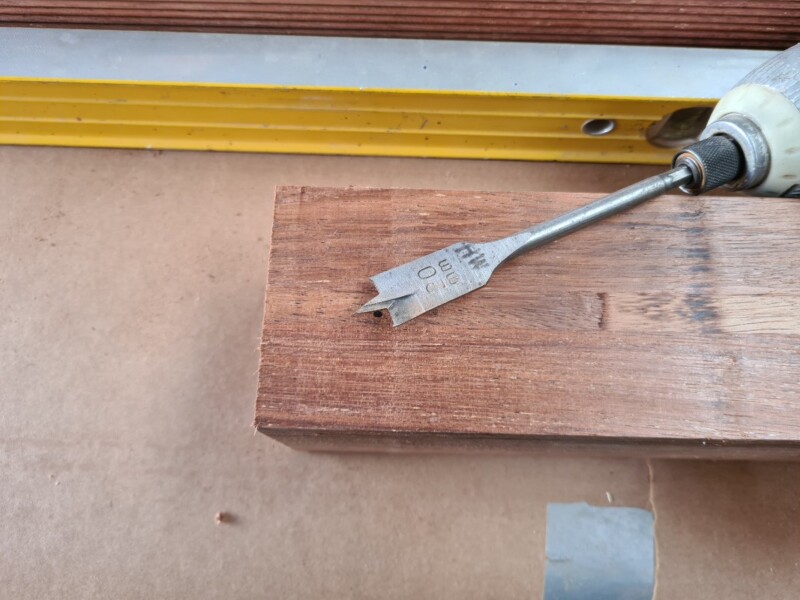
The image below is how the holes looked, one above the other so the bolts don’t cross into each other.
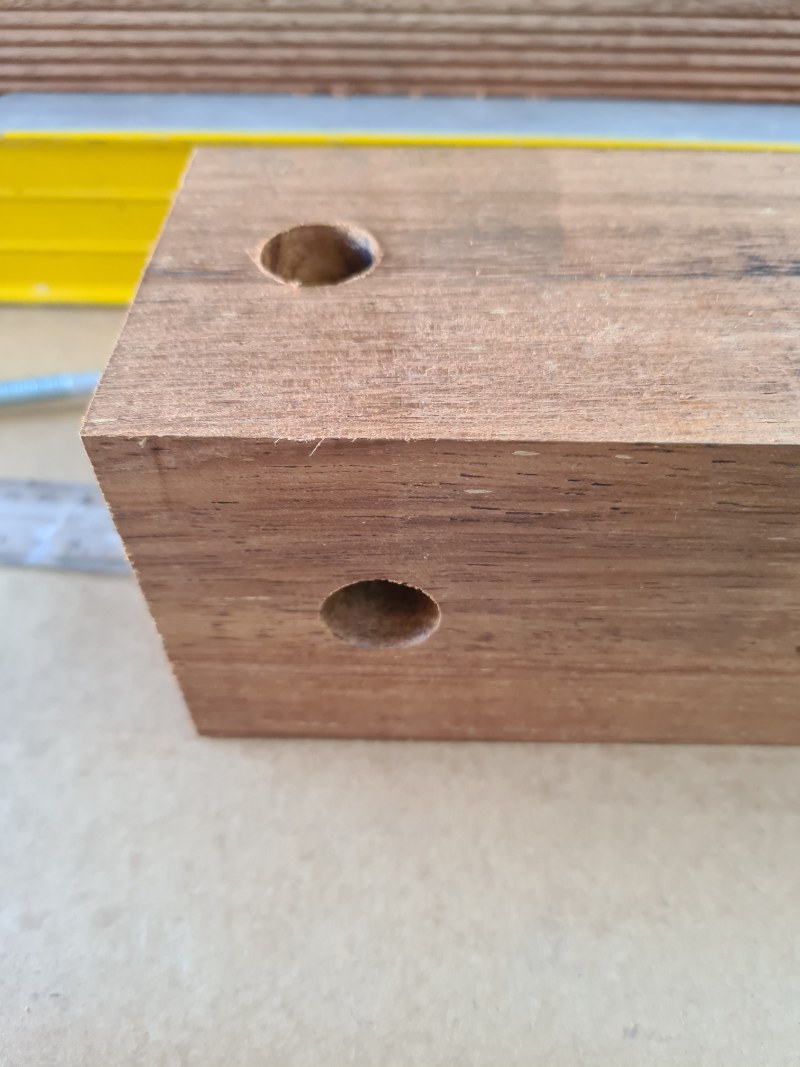
You can now add the bolt and secure the nut in place. You repeat this step for all the legs. I must be honest and say this table weighed a tonne I knew it would be heavy, but not as much as it was.
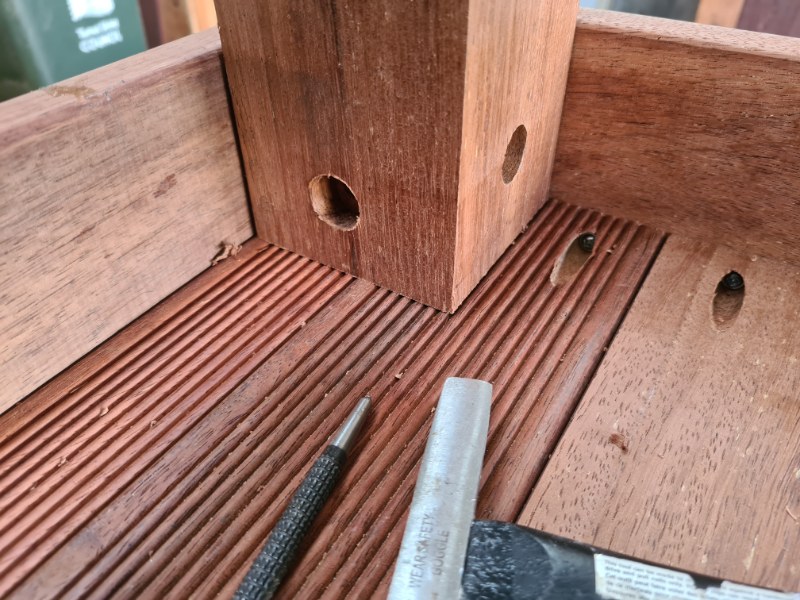
Measuring the table leg supports
There are two ways you can add the legs, the first one is to add the support to the bottom and secure them in place. The other is to move them further up between the legs.
I went for this option so the support can also be used as a footrest when standing next to the table. I have no idea if others do this but we find it more comfortable to stand with one foot up.
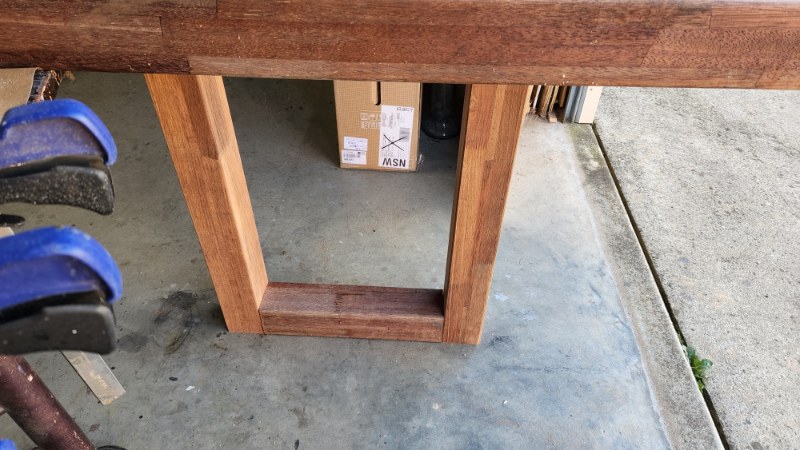
For this step, you can add the support bean to the height that suits you. I placed it randomly which ended up being 42cm from the top of the support to the end of the leg.
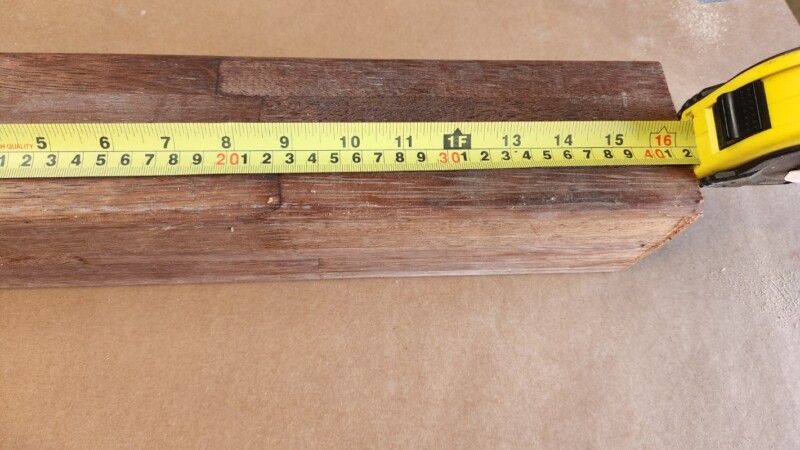
I sat at the bar table and found for me being 5″7 it was not very comfortable. It was uncomfortable for me to have my legs hanging down So I decided to add a footrest which would double as a leg support.
Making the table footrest
I did not have wood thick enough for a footrest, so I glued two pieces of the decking wood together to make a thicker piece. This measured 4cm once glued together. Please ignore the shocking nail polish, they are workers’ hands. lol
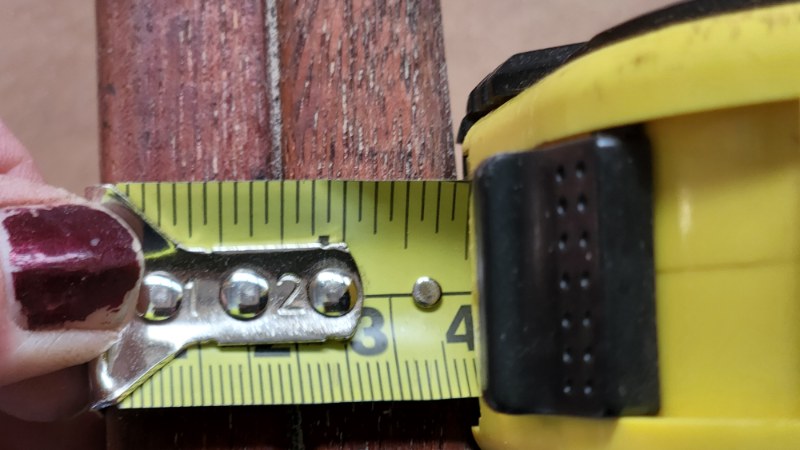
Next, I marked out the width of the leg supports. This area will be cut away for the footrest to slot inside.
I made a silly mistake here and used the footrest as a ruler to draw the lines. I did not take into account the width of the saw blade and I ended up with a small gap. For a more accurate fit use a tape measure instead.
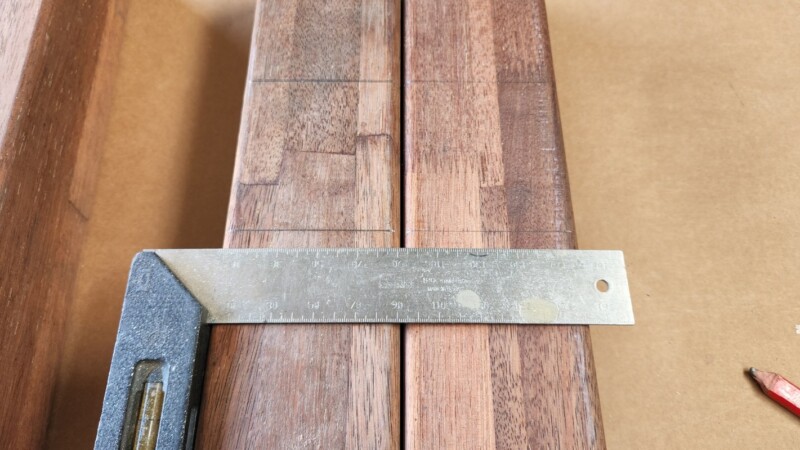
You can use a hammer and chisel to remove this section but I find it easier and quicker to use a circular saw. Before you make your first cut make sure the blade is on the inside of your line.
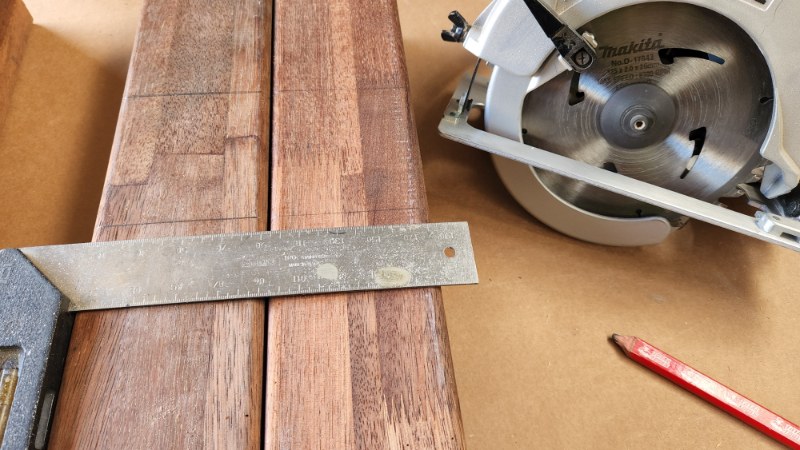
Next, cut multiple cuts into the wood having the blade depth set at 4cm which is the depth of the footrest.
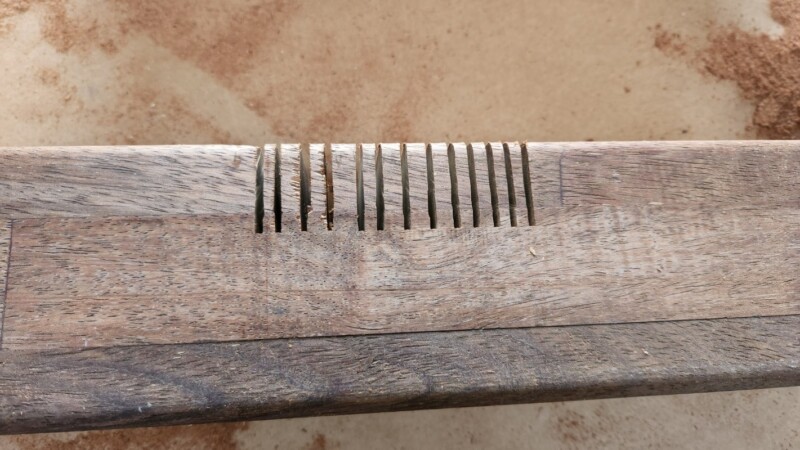
You can now use a chisel to push the wood apart so the inside sections break off.
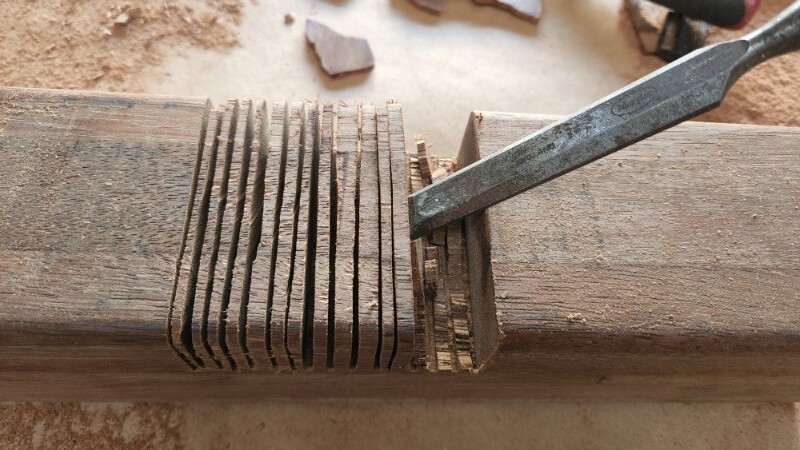
I used a hammer and chisel to clean up the inside of the cutout.
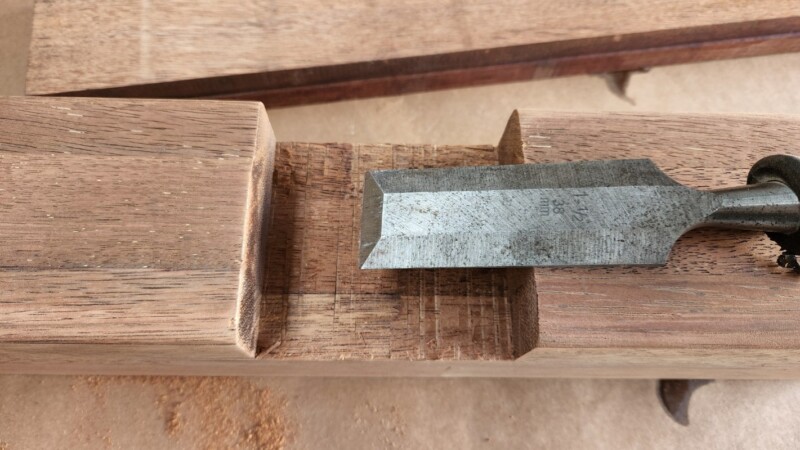
Attaching the bar table legs
When I build in my workshop I am usually alone with no one to help with the difficult bits. When I was trying to add the leg supports I was struggling so much to hold the supports in place while trying to measure and secure them.
They were just so heavy and awkward. A solution to this problem was to use some ratchet straps to hold the legs and supports in place.
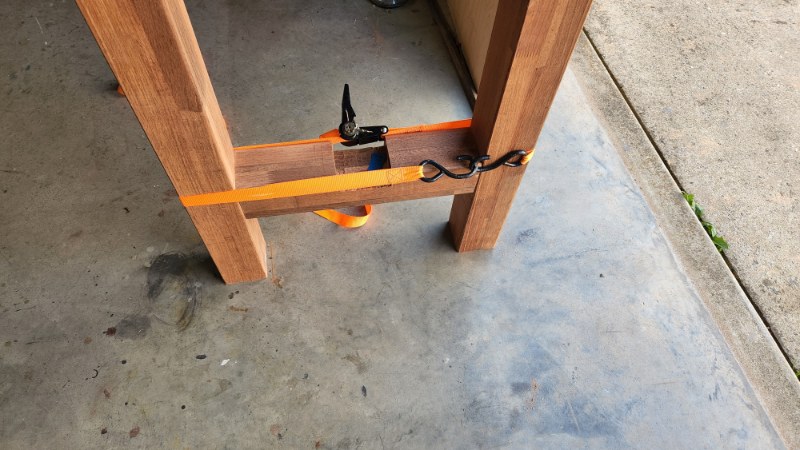
I predrilled holes part way into the wood using a small spade bit before drilling a hole one size smaller than the screws I would be adding.
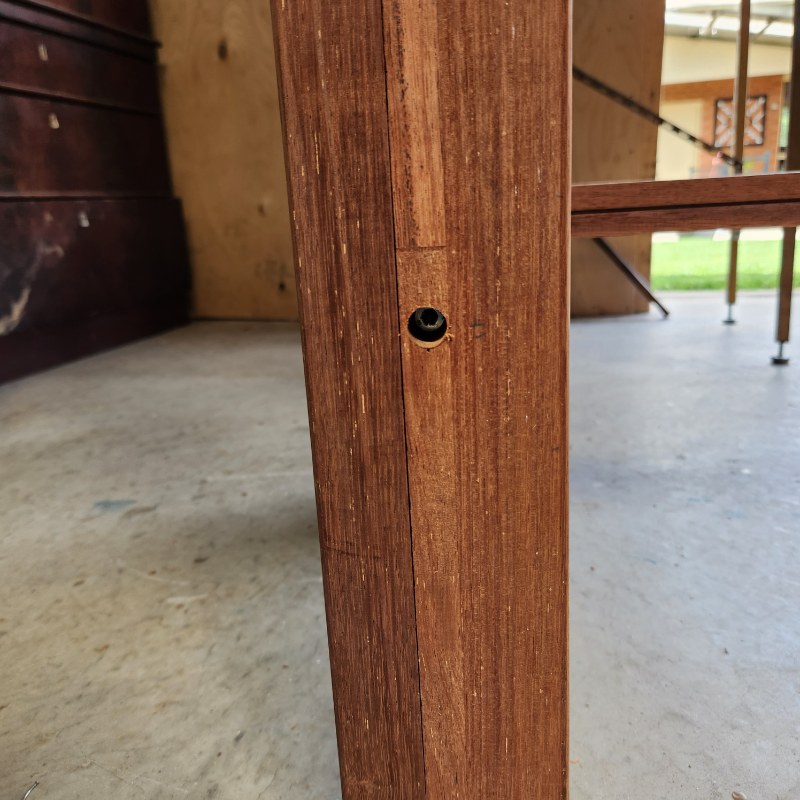
To make the supports more secure I added some wood glue and screwed the supports in place. I did leave the rachet straps on overnight while the glue dried.
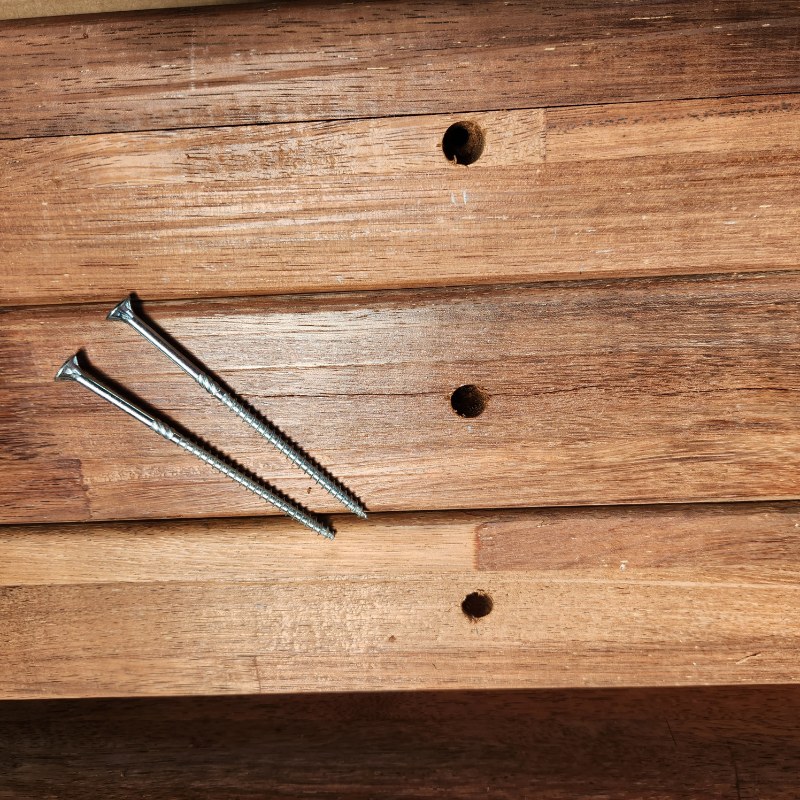
Adding the bar table footrest
The image below is the result of not taking into account the width of the saw blade when cutting the slot. It was not the end of the world it just meant it would not be a snug fit. But this was a simple fix by adding screws to hold the footrest in place.
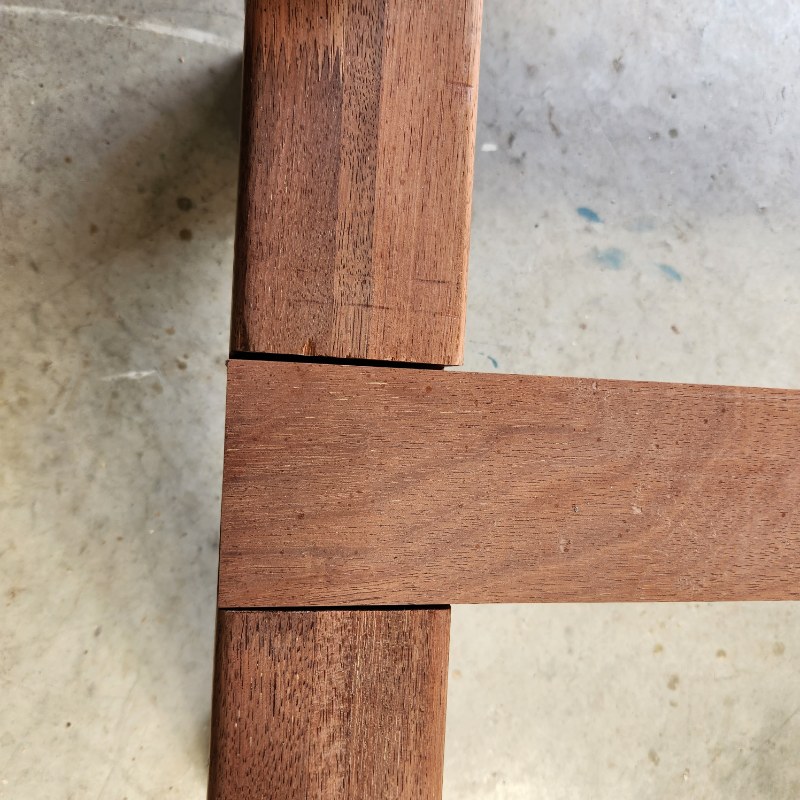
I found one more issue when I tried out the table and that was the square edge on the footrest was not comfortable on the feet. This was quickly resolved by removing the edge with a router and a round-over bit
.
Sanding the outdoor bar table
To finish off my outdoor bar table I sanded the surface using 120-grit sanding discs on an orbital sander. This was mainly to remove all the watermarks in the wood because it had been sitting outside in the rain.
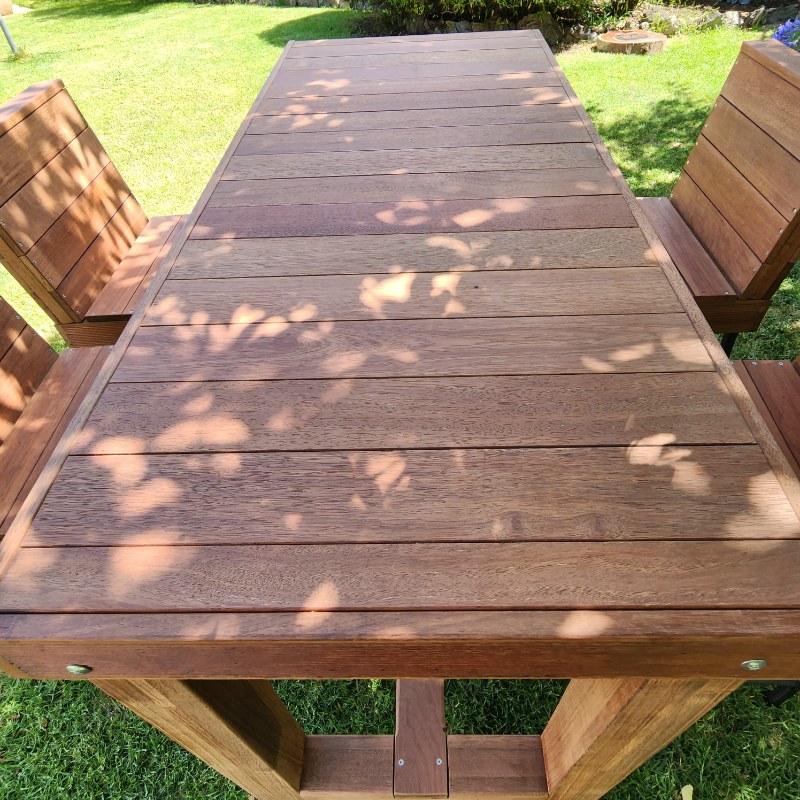
Adding oil to preserve the bar table
Finally, I painted on a coat of timber oil to protect the timber from the weather.
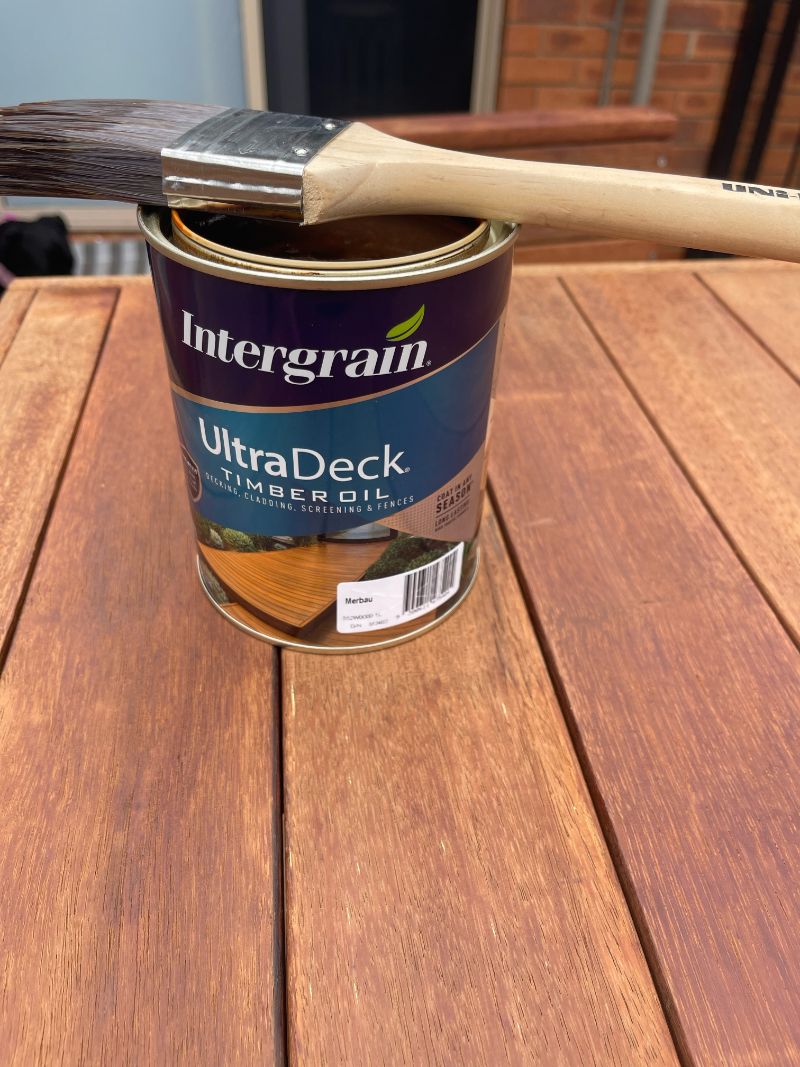
You can see from this image the difference the oil makes to the colour of the timber.
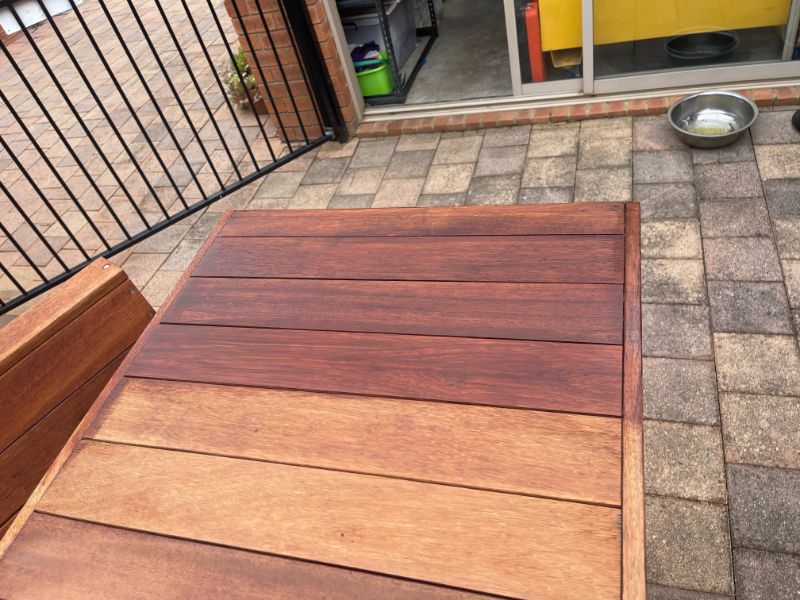
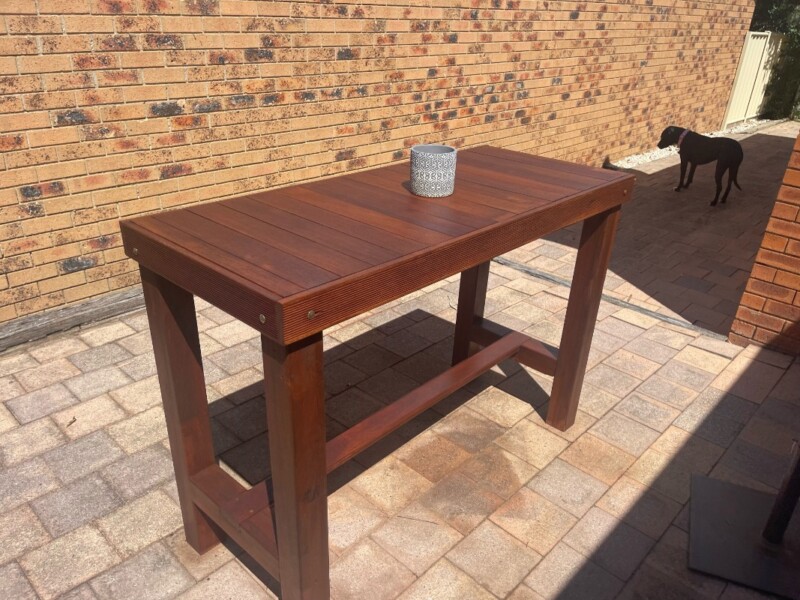
This was the outdoor bar table completed. I did not have enough wood to make matching chairs so I bought some.
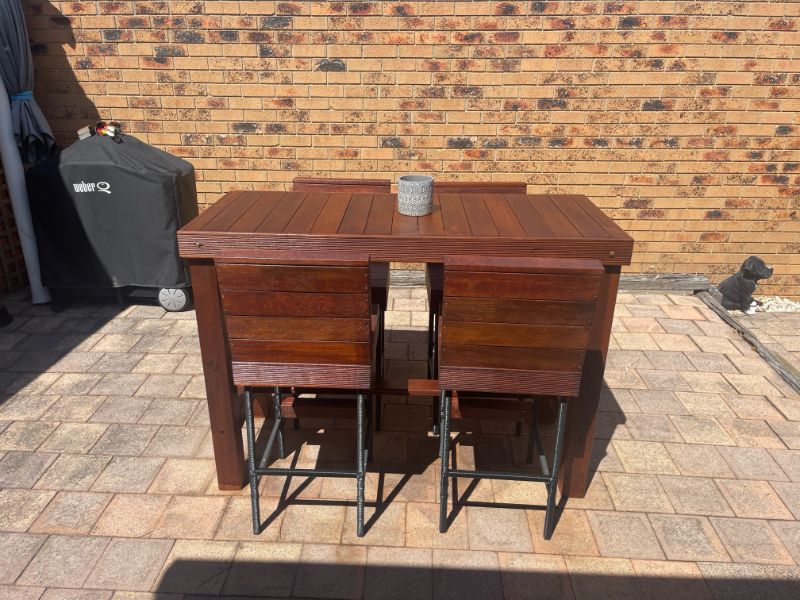
When they arrive I absolutely hated them. I spent $400 on them so I had to use them. I will add a post soon on how I made removable covers made from wood to match the bar table.
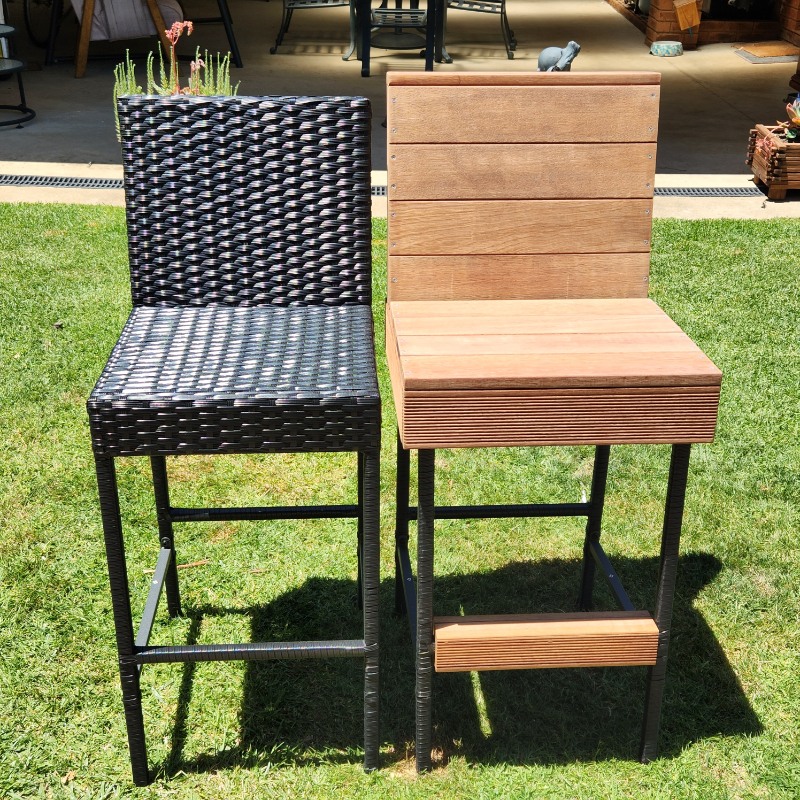
If you are looking for more DIY projects for outdoor entertaining be sure to check out this cool patio cooler made from a recycled freezer.
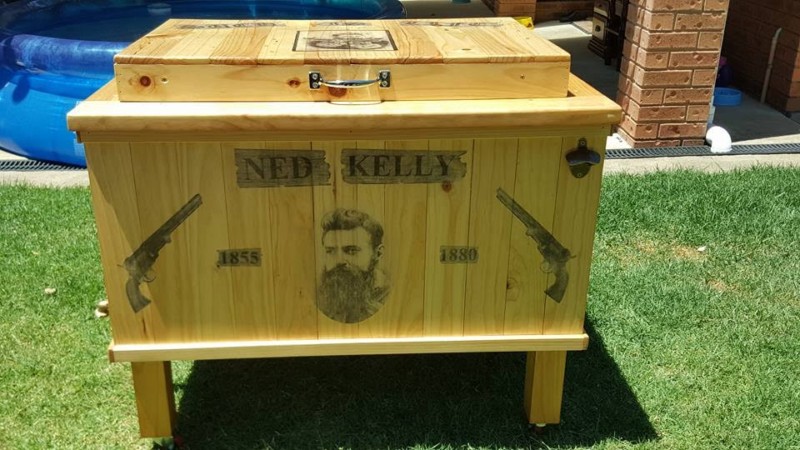
Or the wall-mounted outdoor pallet bar.
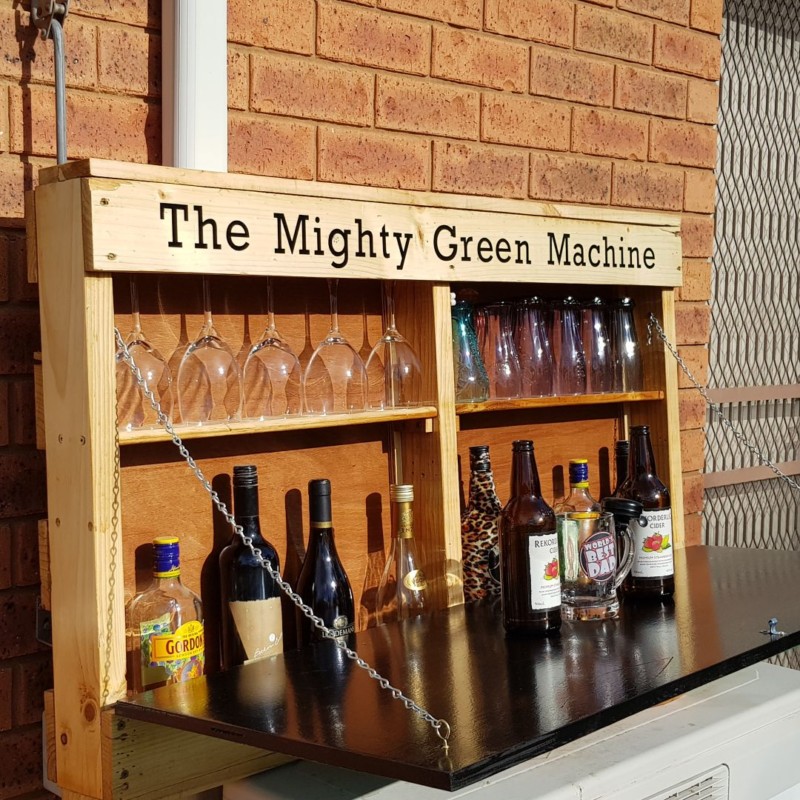
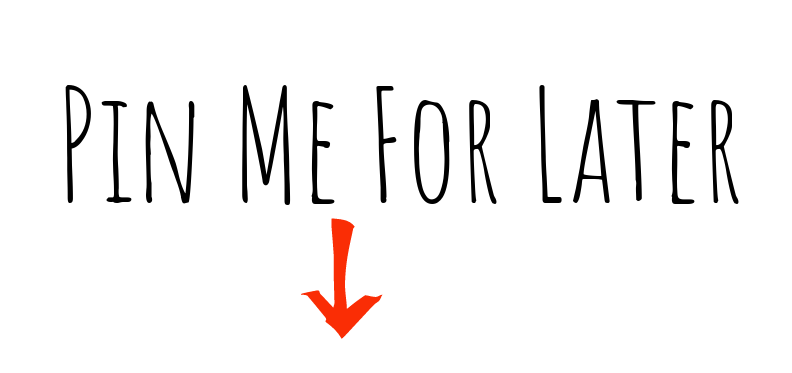
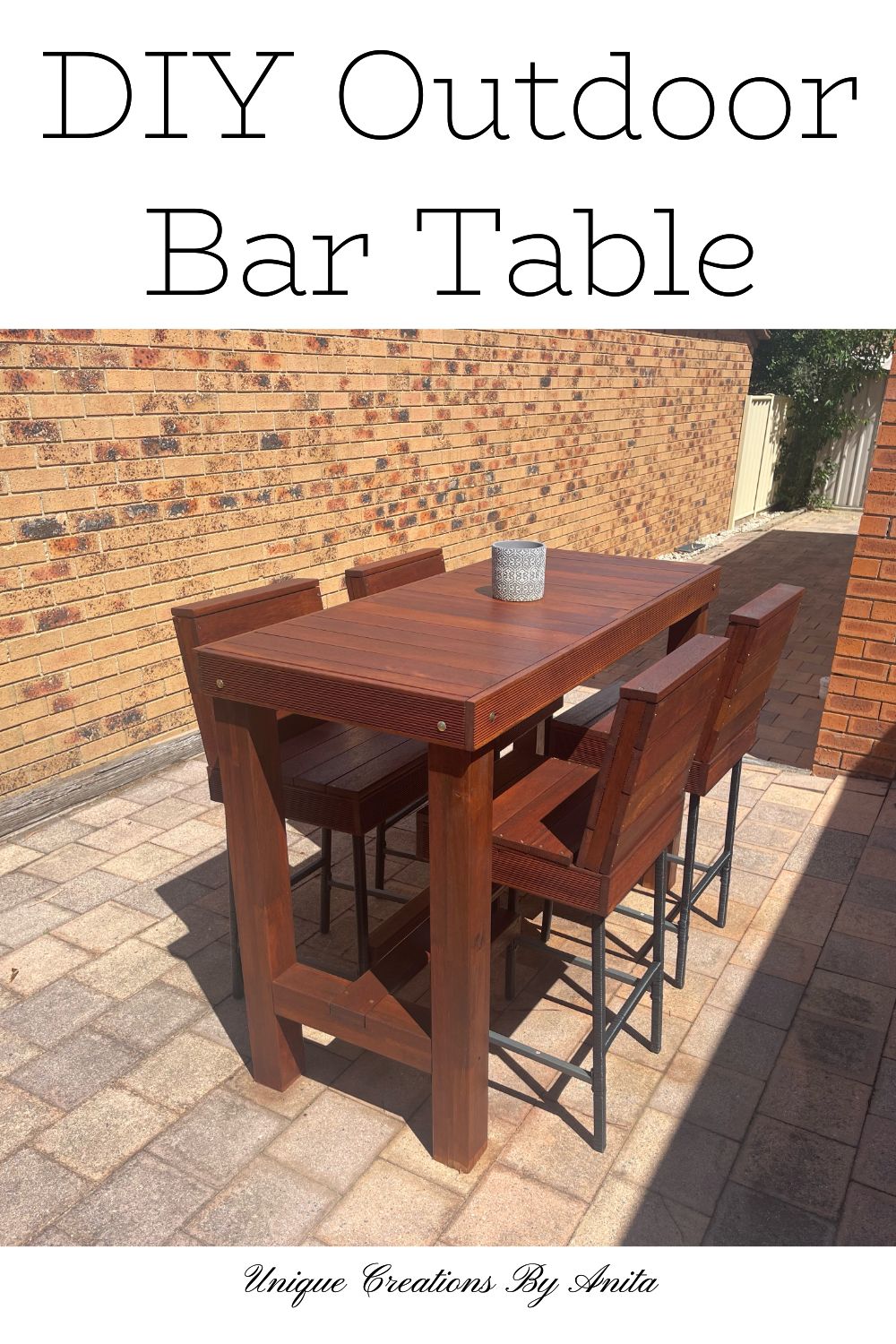
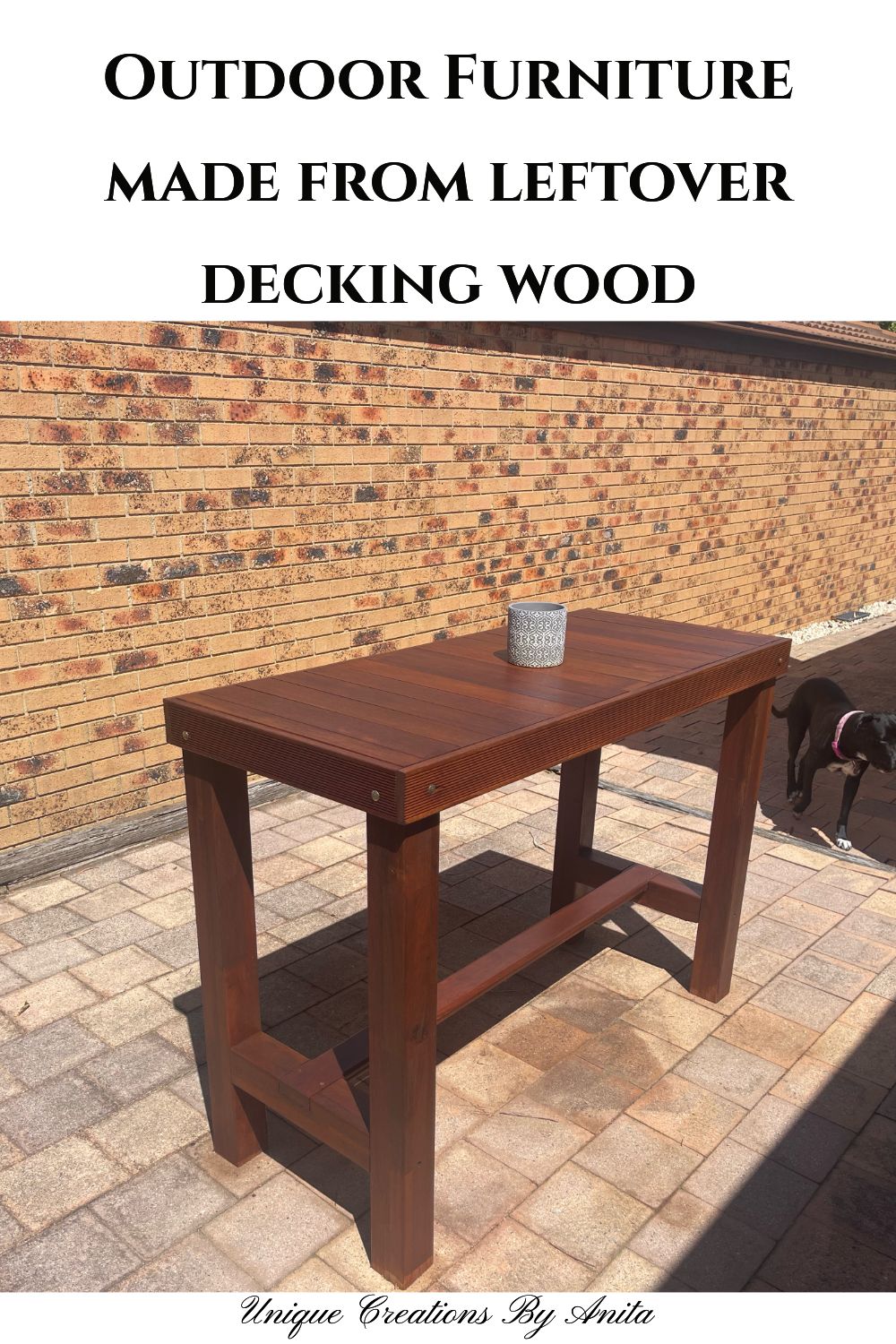
If you are looking for any of the items used in this project, please consider using our links. By clicking on the links we will earn a small commission at no extra cost to you. Which helps us come up with new and exciting ideas to share with you. Please feel free to share or leave a comment we would love to hear your thoughts.

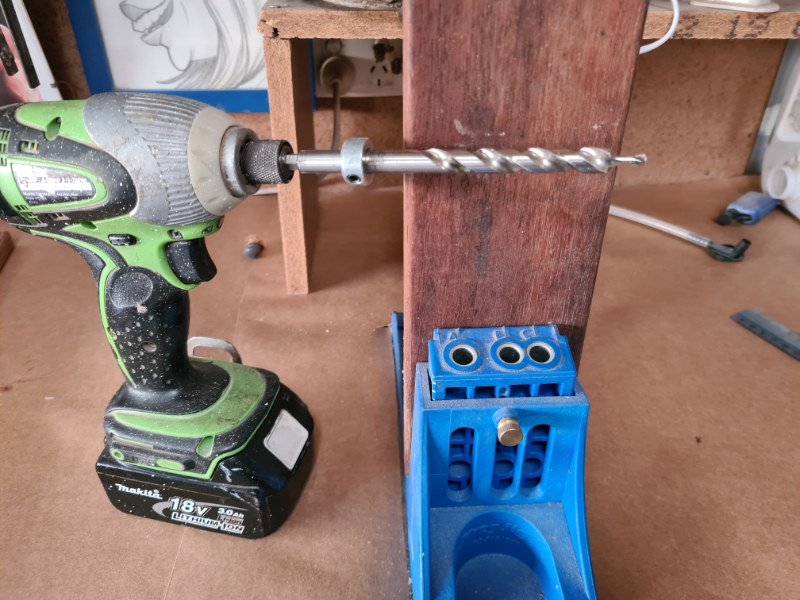
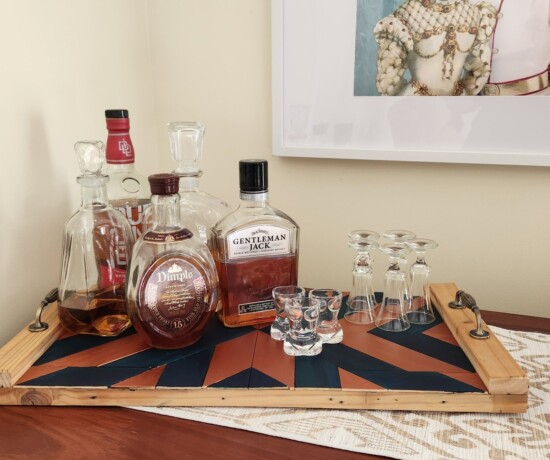
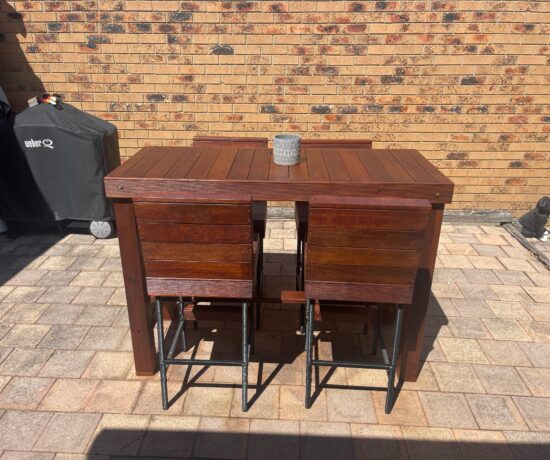
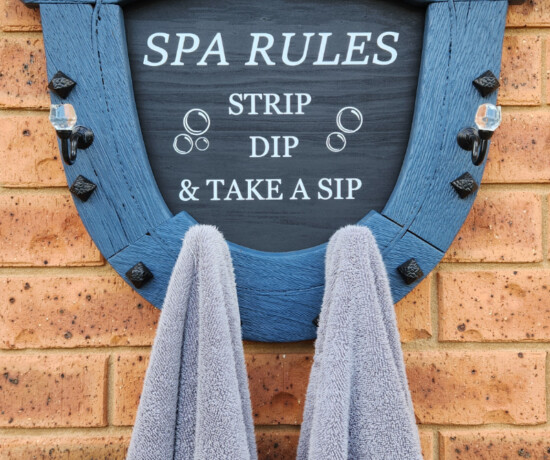
3 Comments
Sara
May 3, 2023 at 10:01 pmAwesome! Your son must be over the moon with his new table Anita! You thought of everything. I’m surprised you have any nail polish left at all after all that hard work lol. I can’t wait to see how you did those chairs; they look incredible.
Anita Holland
May 6, 2023 at 5:31 pmThanks so much Sara, they loved it. I agree I am surprised I still have nails too. I will post the chair tutorial soon.
Marie B
June 4, 2023 at 1:39 amWow Anita, very impressive! I bet your son was thrilled to bits with his new bar table and proud as heck of his mother’s talent. I love that it’s made with leftover lumber. I’m looking forward to seeing how you modified the chairs.